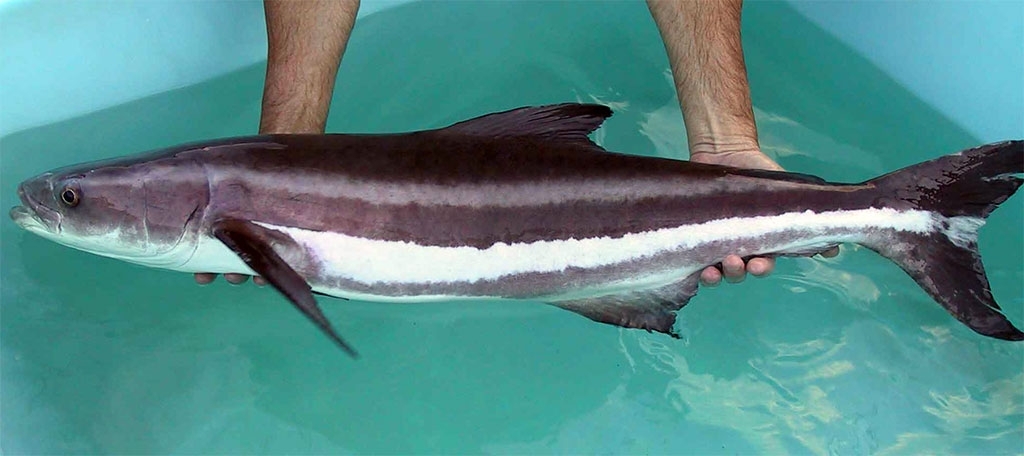Cobia, the “crab eaters”, are exhilarating to catch and tasty to eat. They are definitely one of Florida’s anglers’ favorites.
Cobia Facts
- Largest caught in Florida was 104 pounds
- Average size range is 20-40 lbs.
- Slim bodied fish with a broad depressed head, a protruding lower jaw
- Dark brown color with a prominent dark lateral stripe that runs from the eye to the tail
- Found world-wide in tropical waters
- Also knows as Ling, Crab Eater, Lemonfish, or Bacalao

Finding Cobia
Cobia are always around, but might not be easy to find. During summer and spring, try the beaches. But for the winter months, your more likely to see them hanging around markers, near big bridges, and even buoys suspended where the tidal flow is visible on the surface of the water. (where there are crabs, there are cobia)
What do Cobia Like?
As a rule of thumb, use real natural bait, whether they are dead or alive, fish prefer real food. The food of choice for the “crab eater” is obviously crab. Pinfish and cut baits also work for catching cobia.
The Tackle
Cobia can be big fish, but you can be sure they will always be strong fish regardless of size. We suggest you start with 50-lb. fluorocarbon leader at least six feet long. This might fluctuate between 40 and 60-lb. so have that available as well.
Cast Twice
Cobia seldom are found alone. While you’re bringing one to the boat, cast a bucktail or plug to catch one of the followers.
No Rest for the Wicked
If you happen to get a “docile” cobia that seems to put on a rather lackluster fight, beware, some cobia like to finish the fight IN the boat rather than out. Just because you have pulled it in the boat, does not mean you can rest.


